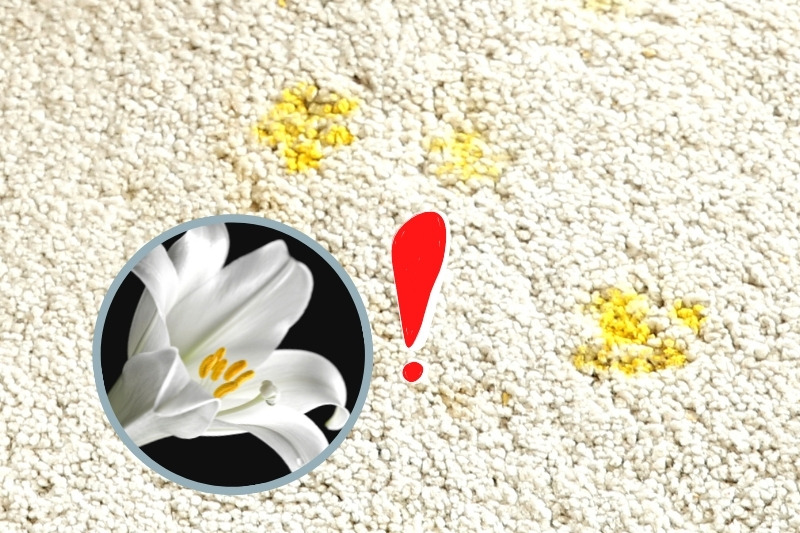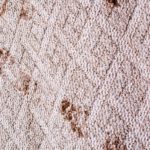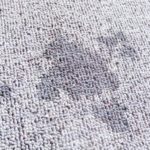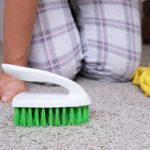It’s a really sweet gesture when someone gifts you a bouquet of lilies. But when the lilies in question start to age and pour their lily pollen all over your carpets, that initial ‘kind gesture’ soon ebbs away.
Not only does lily pollen get everywhere, but the dusty orange-brown pollen usually stains your clothes, hands and carpets in the process.
Getting rid of the pollen is a must, but how do you get rid of lily pollen without causing more mayhem? Read on to find out how to dispose of the pollen once and for all.
It’s quite easy to remove lily pollen from a carpet, the hardest part is being careful not to touch or disturb the pollen too much when cleaning it away.
One wrong move and you could end up with pollen all over your hands and feet, and you may end up traipsing the lily pollen throughout the whole house!
So, take your time when carrying out the steps below.
Tips Before You Start Removing Lily Pollen from Your Carpet
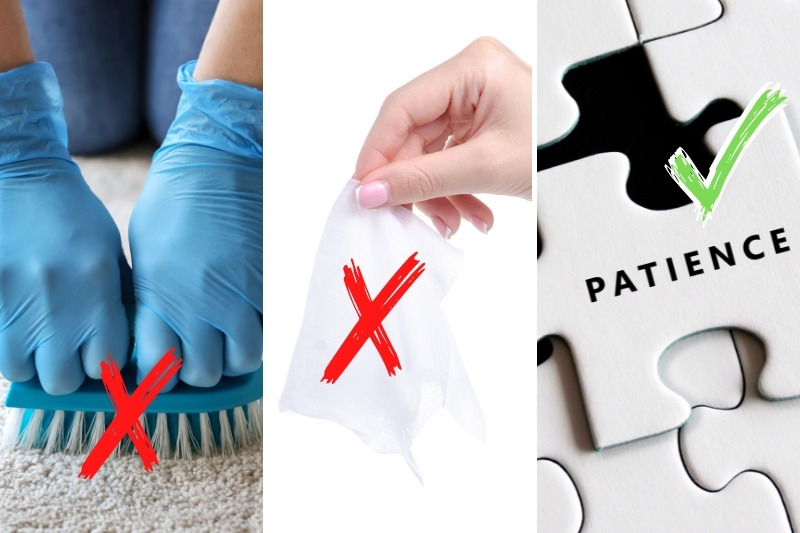
Below you’ll find a few tips to keep in mind when clearing lily pollen off your carpet:
- Don’t touch the lily pollen with your hands – The oil on your fingers will react with the dusty pollen, and will make cleaning harder.
- Always keep lily pollen dry when you start to work with it – It’s easier to remove the dusty mess when it’s in this state. If you add water to the pollen early on, the liquid will make the pollen spread deeper into the carpet. (A liquid substance can be used to treat lily pollen stains, but more on that below).
- Don’t scrub pollen marks – This will only push the lily pollen deeper into the carpet’s fibres and it will make the pollen more difficult to remove.
- Don’t use wet wipes to clean the pollen off the carpet – Wetting the soiled patch will make the lily pollen harder to remove.
- Patch test chemical treatments before you use them on your carpet.
- Remember to work from the outside of a stain and towards its centre – This helps to keep the pollen in one place.
- Patience is vital! – The more you rush, the harder it’ll be to remove the lily pollen because you’ll make a mess! So, work through the steps listed below at a slow pace.
- Be prepared to repeat some steps mentioned below multiple times – Lily pollen can be messy, and you might end up repeating the steps below a few times to remove the pollen once and for all. But don’t be too disheartened, it happens to us all.
How to Get Lily Pollen Out of the Carpet
Tools you need:
- Vacuum cleaner
- Sellotape
- Dry-clean solvent
- White cloths
- Isopropyl alcohol (if you don’t have any you can buy it on Amazon here)
- Biological laundry detergent
- Water
Steps to follow:
- Once you’ve spotted some lily pollen on your carpet you need to avoid walking over or touching the affected area with your feet and hands.
- Grab your vacuum cleaner and hoover the pollen up from the carpet. Angle your hoover carefully over the lily pollen, so you can pick up as much pollen as possible. Also, angling the hoover means that the heavy appliance doesn’t force the pollen down into the carpet’s fibres.
- Then, grab some Sellotape.
- Gently and carefully place a strip of Sellotape over the pieces of pollen that have been left behind, and start to gather up more lily pollen from the carpet – keep your hands and fingers away from the dusty substance.
- Take your time and repeat the steps above until you’ve gathered up as much dry dusty lily pollen as possible.
- If you get pollen on yourself, you must go and wash the pollen off yourself, otherwise you’ll contaminate other surfaces in your home.
- Then spray the area with a dry-clean solvent, like Tableau Spot Remover, to treat any leftover stains.
- Follow the instructions on the item you’re using (you typically apply the product and either blot and hoover the solution up, or your brush the solution off the carpet).
- Hoover the carpet again just to make sure no bits of pollen have been left behind.
- If the pollen/stain has gone, you do not need to continue following these steps. But if there is still some staining behind, carry on.
- Grab a white, clean cloth and pop some isopropyl alcohol onto it.
- Start dabbing at the pollen-stained area with the cloth.
- Repeat steps 11 and 12 until the mark has disappeared.
- Remember to use a new patch of cloth each time you blot the surface, and add more isopropyl alcohol to the cloth when you need to.
- Then use a new clean, white cotton cloth to soak up the excess moisture from the carpet.
- Inspect the carpet and allow the carpet to air dry if the lily pollen has gone. If not, continue with this method.
- Grab some biological liquid detergent, like Persil Biological Washing Liquid.
- Pour a drop of detergent onto a clean, warm, damp cloth.
- Dab this cloth onto the pollen affected area.
- Use a separate damp cloth to dab at the carpet in order to remove excess product.
- Continue this exercise until the carpet is clean and free from pollen marks.
- Allow the carpet to dry naturally – open plenty of windows.
Tip: Always do a patch test before you work with chemical cleaners.
How to Prevent Pollen-Related Problems in the Future
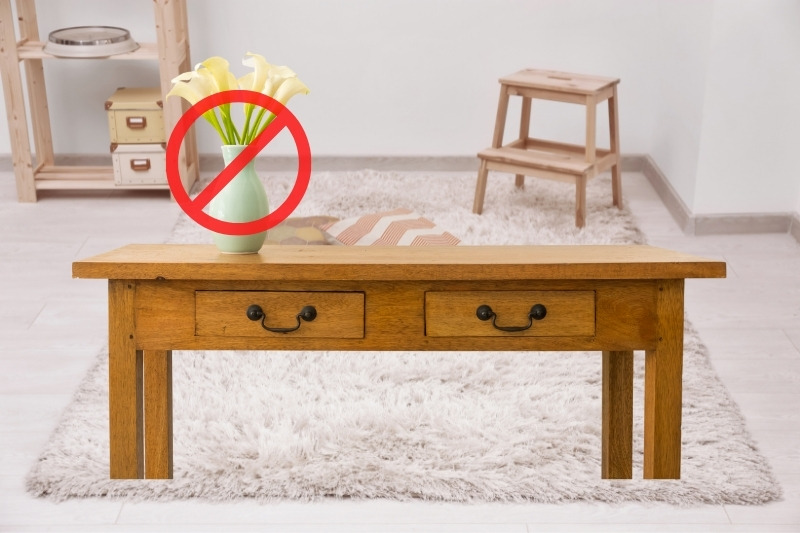
Here are a few tips on how to limit pollen-related problems in your home in the future:
- Remember that prevention is key – Be proactive and tend to your flowers before they cause havoc!
- Get rid of the flower’s anthers before it blooms fully.
- Remove the anthers when the plant has bloomed with a tissue and dispose of its contents correctly – do not touch the anthers with your hands.
- Don’t put a vase of lilies close to a spot where people are going to brush/bump into them. This will encourage the lily pollen to attach itself onto a person’s clothes and to fall onto the floor.
- Place lilies in an appropriate place and pop a dish under the vase to catch the pollen that falls off – this may prevent the pollen from spreading around too much.
- If you’re very concerned about pollen and flowers being in your home, tell people not to buy them for you.

Bethan has a passion for exploring, reading, cooking and gardening! When she’s not creating culinary delights for her family, she’s concocting potions to keep her house clean!
